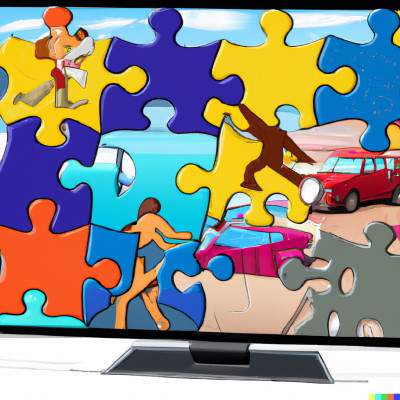
What's different about a video jigsaw puzzle
The history of jigsaw puzzles
The history of jigsaw puzzles dates back to the late 18th century, when they were created as a way to teach geography to children. The first jigsaw puzzle was created by an English mapmaker named John Spilsbury, who mounted a map of the world onto a sheet of wood and cut it into small pieces using a jigsaw. He called this creation a "dissected map," and it was designed to help children learn about different countries and their locations. The popularity of jigsaw puzzles quickly spread, and they became a popular pastime for people of all ages. In the 19th century, jigsaw puzzles were mass-produced using lithography, which allowed for the creation of more intricate and detailed designs. These puzzles were made of cardboard and featured a variety of themes, including landscapes, historical events, and famous works of art.
As jigsaw puzzles became more popular, new techniques were developed to improve their quality and appeal. One such technique was the use of interlocking pieces, which made it easier to assemble the puzzle and prevented pieces from falling out. This innovation also allowed for the creation of more complex and challenging puzzles. In the 20th century, jigsaw puzzles continued to evolve and became even more popular. The development of new printing techniques allowed for the creation of high-quality images that could be printed directly onto the puzzle pieces. This made it possible to create puzzles with a wide range of themes and subjects, including abstract designs, photographs, and intricate patterns. Today, jigsaw puzzles are still very popular and are enjoyed by people all around the world and are available in a wide range of sizes, themes, and difficulty levels.
Electronic jigsaw puzzles
With the advent of computers and mobile devices, the jigsaw puzzle was re-imagined as an electronic game. Instead of physical pieces that must be fit together, an electronic jigsaw puzzle consists of virtual pieces that are assembled on a computer or mobile device. These puzzles are very convenient because the player can choose from thousands of different images and select the number of pieces to solve.
While a jigsaws were once a hobby to pursue at home, electronic jigsaws could be played on-the-go. A player could spend some time working on a puzzle, then pause the game and return to finish it at a later time without it taking up space on a table or board or worrying about the pieces falling apart. While they have advantages over traditional jigsaws, electronic jigsaws are essentially the same game. Any electronic jigsaw could be printed out and re-created as a traditional jigsaw. Factors that make these puzzle challenging are the same, namely: The number of pieces, the complexity of the image and the subtlety of the color changes in the image.
Video jigsaw puzzles
Video jigsaw puzzles are both similar and different from other jigsaws. For a start, video jigsaws are the first jigsaw that can only be created or played on an electronic device. Video jigsaw puzzles are electronic jigsaws where the assembled puzzle pieces make up a playing video clip rather than a still image. Since each puzzle piece is a little segment of the playing video, it is constantly changing and the player has to look for matching pieces from a collection of pieces that are all changing too.
Video jigsaw puzzles are typically more challenging than a traditional jigsaw puzzle of the same size. The extra dimension of video requires more concentrated attention from the player and makes for a more engaging puzzle. This means that in addition to size, complexity and color, the difficulty of a video jigsaw puzzle depends on the speed of the video action. A small puzzle with a clip from an action-movie may be much more challenging than even a much larger puzzle where there is little motion. Traditional jigsaw puzzles often create difficulty by making puzzles with thousands of pieces. This doesn't work well on electronic devices especially on mobile devices where screen size is limited. Video jigsaw puzzles have an advantage here in that they can be really challenging even with a modest piece-count that fits on comfortably on a phone.
